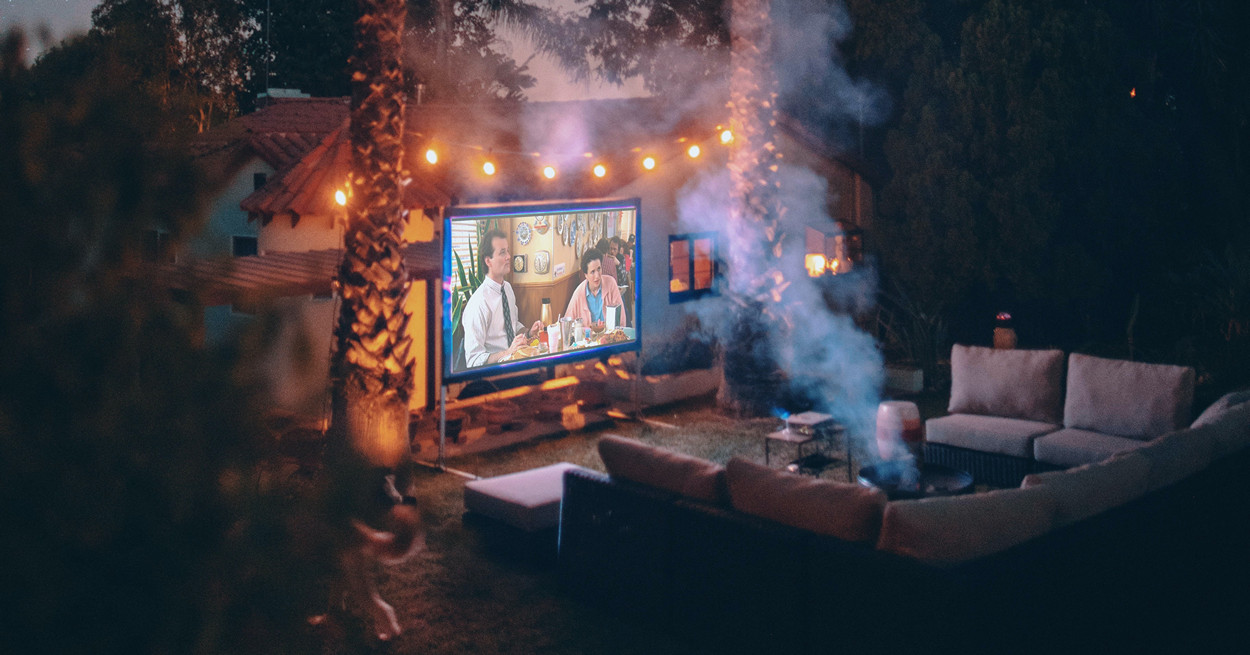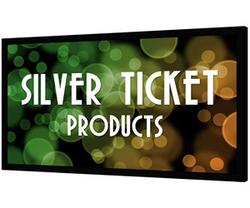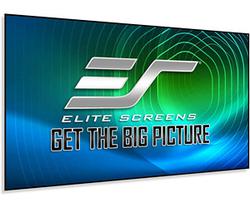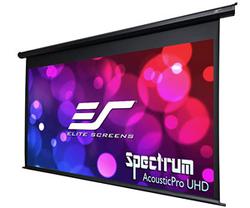At gagadget.com, your trust is our priority. We follow strict quality standards in our research, tests, and analysis of video projectors, to give you the best experience. Learn more
Best Projector Screen Material Review 2024
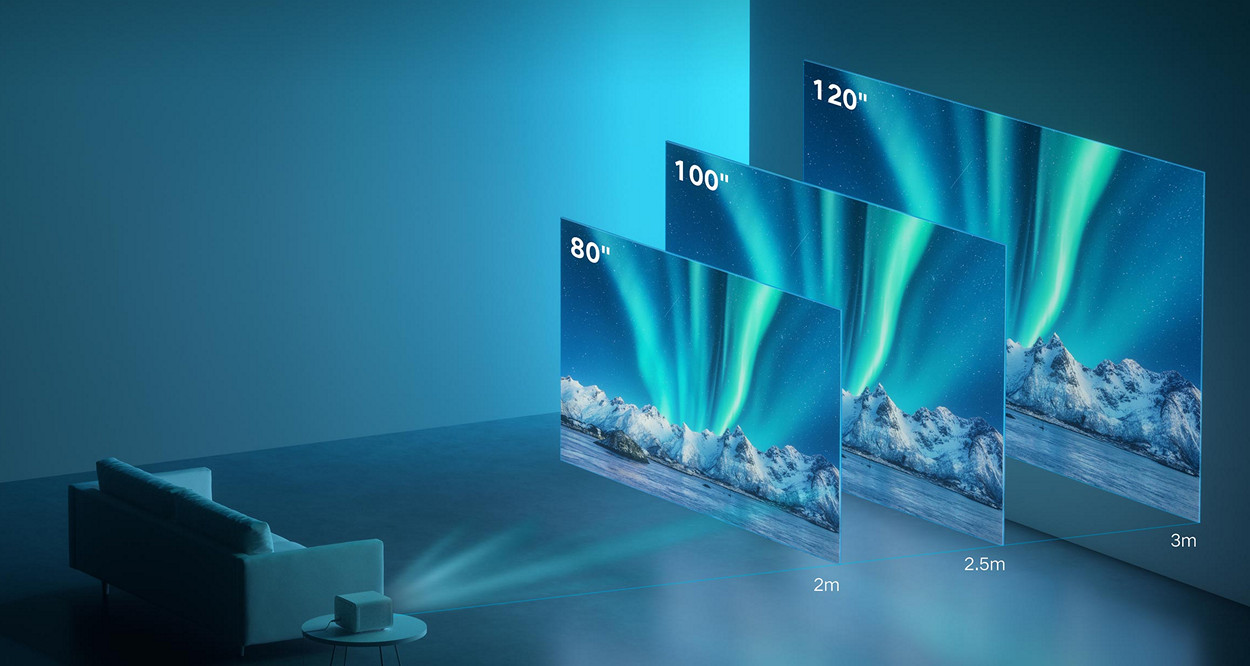
Photo: Xiaomi
A projector is not an independent device, it must be paired with a projection screen, the choice of which, at first glance, is very simple – just hang a white canvas on the wall. But if you dig a little deeper into this issue, it may turn out that this task is no easier than choosing the projector itself. But don't worry, our material will help you figure it out what is the best projector screen material for your needs.
Screen Size and Aspect Ratio
The first and most obvious parameter for the screen is, of course, its diagonal. When choosing a projector and a screen, there are 3 things that need to be matched with each other: screen size, projector throw ratio, and installation place.
If these parameters are taken into account, after purchasing the equipment, you will not get any unpleasant surprises, such as a picture that goes beyond the frame of the screen or lack of correct focus.
Don't forget about the same aspect ratio for the screen and the projector: the modern standard for high-definition multimedia is 16:9. The 4:3 aspect ratio is still popular for devices that are used with wireless presentation systems in offices or for educational activities, but this ratio is not so interesting for home theaters due to the large unnecessary margins that will definitely appear when watching movies, videos and other content with 16:9 aspect ratio.
There is also popular 16:10 format, which corresponds to the resolutions 1920×1200 and 1280×800. This format allows you to view 1080p videos with small inactive fields on the screen, but also has additional space for more comfortable viewing of presentation slides.

For watching movies, there is also a screen ratio standard called Cinemascope, which is 2.39:1. This format is used in public cinemas.
Design
So, let's go further into the best material for projector screen. According to the type of design, screens can be divided into 2 main groups: fixed and mobile.
Fixed
Fixed frame design involves the assembly of the frame with the subsequent stretching of the fabric on it, the assembled structure is attached to the wall. The main advantage of this type of projector screen material is the even tension of the fabric, which eliminates the distortion.
A pull-down screen can be ceiling mounted or wall mounted. It is compact, and you can unfold the movie screen material over a TV hanging on the wall, thus turning an ordinary living room into a movie theater.
For stretching, a weighted tape is used, which is stitched to the bottom of the screen, leading to an imperfect tension. More expensive models may also use side stretchers that solve this problem.
Roll-up screens can be unfolded manually, or be motorized by an electric drive. Some projector models have a special trigger output that gives a signal to open the screen when the projector is turned on.
Projection on the wall is also quite a common and inexpensive option for the screen. Here it is important to determine the exact location of the future screen beforehand, because it will not be possible to relocate it.
Mobile Screens
Mobile screens can be the same roll-up screen installed on a special tripod. For transportation the screen rolls up into a tube, and the tripod folds in. Such a screen is perfect for out-of-the office presentations or for moving between different rooms within the same office or educational institution.
On a collapsible frame, due to its design, such a screen has a better tension and better stability, which allows you to work comfortably with a large projector screen cloth. For transportation, such screens are folded into a special case.
The inflatable screen is a type of construction for outdoor use, similar to an inflatable children's trampoline.
The inflatable frame for transportation is folded into a bag, installed and activated by fans that blow the air in and maintain pressure even if the shell is damaged.
Gain Factor
The Gain Factor is a characteristic that indicates the reflectivity of a projection screen surface. It indicates how much more or less light the screen will return compared to a white matte surface, which has a coefficient of 1.0 and returns 100% light in all directions evenly. So if the coefficient is 1.3, then the screen will return 30% more light, and if 0.8, only 80% will be returned, the rest will be absorbed by the screen surface.
It may seem that the higher the gain the better, because you can compensate insufficient brightness of the device, but it is not so simple: firstly, the higher the screen gain, the narrower the viewing angles of such screen – when you look at such screen from the side its brightness drops noticeably, which will prevent comfortable viewing by several viewers in the living room, where there are no several rows of chairs. Secondly, as the reflective power of the screen increases, glare and so-called "hot spots" may appear on it when viewed from certain angles.
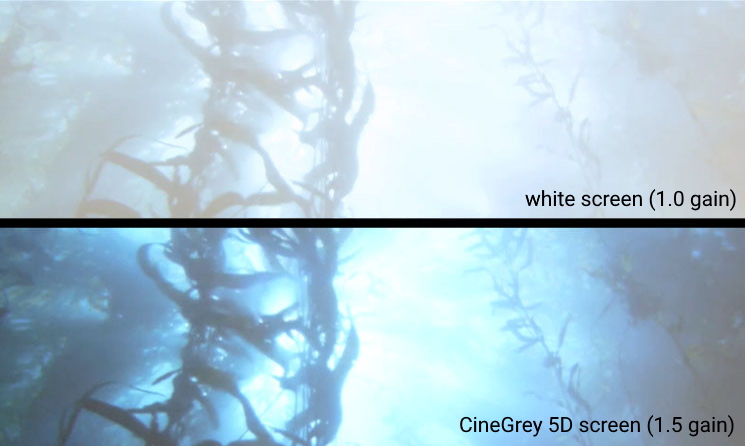
Photo: Elite Screens
Screens with a ratio of less than 1.0 also have their strong and weak points, the main advantage is the increased image contrast and deeper dark colors, the disadvantages lie in the fact that to work with such a screen you need a sufficient reserve of brightness of the laser projector. Do not forget that with the use of 3D glasses image brightness will decrease even more.
Viewing Angle
Viewing angles is by no means a new concept, probably everyone knows what it is, largely due to LCD screens, by analogy with them, projection screens also have such a parameter.
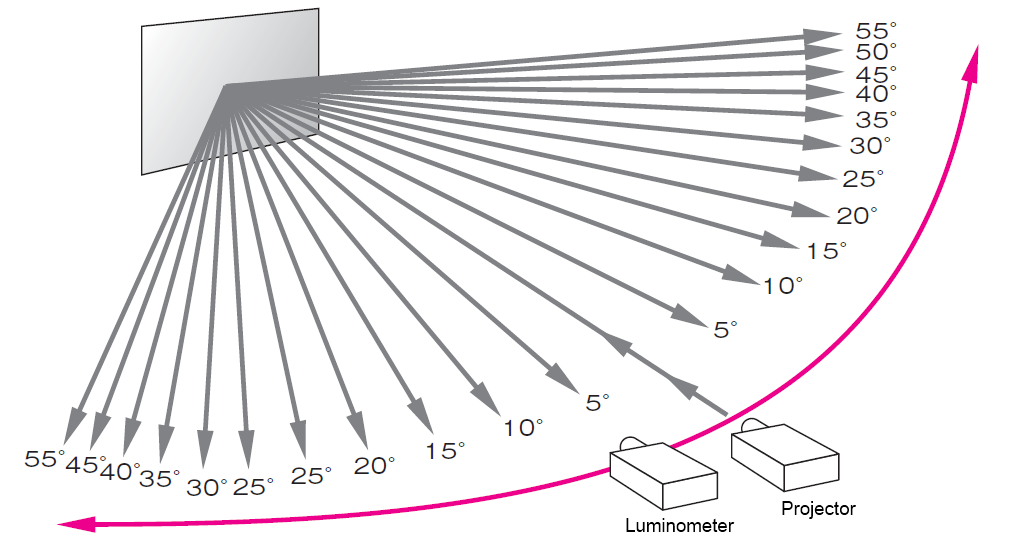
Photo: Panasonic
If you plan to buy a typical matte screen, you don't have to worry about that – its viewing angles are very wide.
But if you want a screen with increased gain or ALR technology, you should pay attention to the parameter "half gain", which defines the range of comfortable viewing in degrees. The point of view with maximum brightness is perpendicular to the center of the screen. If the viewer moves away from the center of the screen? brightness will gradually decrease. At the half gain point the brightness will drop up to 50%.
Types of Coatings
White Screens
White matte screen is the basis of all screens, the most universal and widespread solution. This type of screen is perfect for home theaters in rooms with adjustable lighting level. They have a wide viewing angle.
But, of course, everything has its disadvantages. For a white matte screen this disadvantage is its diffusivity, i.e. it will reflect light in all directions not only from the projector, but also from any other light source. Including re-reflected light, which falls, for example, on the white ceiling of the room, and then back to the screen. As a consequence, the contrast of the image decreases. To combat this effect it is necessary to avoid external light sources and light interior details as much as possible. And if the first is easy to do at home, with the second there may be problems, and here the next type of coating can help you.
Gray Screens
A gray screen is a relatively new type of screen originating from the above mentioned white screen. The color of such a screen can be in several shades of light gray. Gray screens are available with a gain of either below or above 1.0. The darker color of the screen reduces the amount of parasitic re-reflected light, resulting in a deeper black color level and better contrast, but there may be a slight loss in the display of light undertones.
ALR Screens
ALR or Ambient Light Rejecting is a common name for screens that reflect or absorb ambient light and direct light from the projector to the viewer, thereby increasing contrast and brightness in light-filled rooms.
When people talk about an ALR screen they usually mean a mirror reflection screen. Unlike traditional screens that reflect light in all directions they use a basic law of optics: the angle of incidence equals the angle of reflection. A projector is placed in front of the screen so that the surface reflects the projector's light directly onto the viewer, with the light from external sources reflecting back away onto the viewer in the same way. When using this screen it is important that the external light does not fall on the screen at the same angle as the light from the projector, otherwise it will fall into the viewing area.
Another kind of ALR screens, more expensive and rare, is the reflecting screen, which reflects light from the projector back to it and the audience, but at the same time this screen absorbs unwanted light. The surface of such a screen is made in the form of microscopic triangular lenses. These lenses are arranged horizontally on the screen, which means that this screen will absorb overhead light at its best.
Screens for UST Projectors
USTs are special screens that are designed to work with ultra-short throw projectors, which are installed at a distance of several tens of centimeters from the screen. This type of projectors becomes more and more popular and is likely to replace classic long-focus projectors on the market.
These screens like ALRs are designed to absorb ambient light and show the best picture possible regardless of surrounding light. The surface of the UST screens consists of miniature prisms in the shape of a triangle. From below a beam of light from the spotlight falls on them, which is clearly visible to the viewer, but if the light in the room is on, it is absorbed by the opposite side of the triangular prisms when it falls on the screen from above:

The coating of the working side of the prism can be white or gray, with different gain coefficients. The upper part that absorbs the background light is black.
A big advantage of such screens is wide viewing angles.
Black Projector Screen
Another type of ALR screen is a "sandwich" of several optical layers. Light passes through them and, reflecting from the bottom one with a high level of reflection, returns back through all the layers to the viewer. This screen absorbs all the ambient light from above, below, and from the sides, which gives a very high contrast, even in a lit room.
With such a screen, you can achieve the effect of watching a movie in a dark room – the screen absorbs the reflected light from a light ceiling or walls, and this light no longer affects the image, reducing its contrast.
But, for all good things you have to pay. In this case – viewing angles. For such screens they are at the level of 30-35°.
Rear Projecting Screen
It is possible to direct the light beam onto the screen not only from the front but also from the back side, this method is called rear projection (using rear projection material).
The advantages of this type of projection are a higher level of contrast, and the person in front of the screen does not block part of the image.
The main disadvantage of this kind of projection is that you need a big enough room to install the projector on the necessary projection distance behind the screen. The area between the screen and the projector will be "useless" – you can't walk there so as not to cast a shadow on the screen.
Besides projection screens special transparent and non-transparent films or paint for reverse projection are used as rear projection screen material, but those are more likely options for specific professional use, for example for decorating store windows.
Acoustic-Transparent Screens
When setting up a quality home theater, for the proper perception of movies, it is very important to place the front acoustics just behind the screen. In order to ensure that the sound reaches the viewer almost without loss, acoustic-transparent screens are used. It can be perforated or woven fabric.

Photo: Elite Screens
A woven screen surface is better at transmitting sound, especially in the upper range, but such a surface can only be matte white.
Perforated fabric is more prone to sound interference between it and the wall on which the speakers are located, but such fabrics can be not only white, but also gray and black ALR.
Painted Wall
Painting a wall is a fairly low-cost and common option. But for this it is not enough just to paint the wallpaper on the walls with white paint; to avoid distortions, the wall must first be plastered and putty so that the surface becomes as even and smooth as possible, after which the wall can already be primed and painted with several layers of paint. The paint should be of matte and neutral white color, so as not to harm the white balance.
If making the walls smooth for some reason is impossible, large flat building materials can be considered as options, for example, sheets of drywall or chipboard, which can be fixed to the wall with subsequent processing and painting.
Basically, for painting walls under a projection screen, specialized paints are used. They are developed for these purposes and give a guaranteed excellent result, subject to the painting technology. Such paints can be of different colors: white, gray, silver – to suit any customer's requirements. Sometimes it is possible to find a suitable option among ordinary paints.
When creating a screen with your own hands, do not forget about gluing a frame made of black matte tape, for example velvet, around the screen. Such a detail will not only visually separate the screen from the rest of the wall and hide the transition, which in some places may not turn out to be ideal, but will also give the image additional visual contrast.
Frequently Asked Questions
Do I need a special screen to display 3D?
No, you don't need a special screen for 3D at home. But since the brightness of the image is noticeably reduced when viewed with 3D glasses, make sure that your projector is bright enough, when choosing between a white or gray screen.
What is the best color for projector screen?
The choice of screen color depends on the lighting conditions. If the lighting is completely controlled, and the interior in the room is not too light, then you can safely choose a white screen. If a small background illumination or reflective light is supposed, a gray screen will suit you. Black screens are not afraid of third-party lighting and provide excellent contrast, but the high cost of such high-tech screens plays an important role here.
What's the best screen for 4K video?
Ultra HD content requires a high quality screen. It should be even and smooth so as not to distort the display of small enough pixels. Screen manufacturers label such sleek models as "4K screen". If you are on a tight budget for a 4K projector screen, consider getting a good quality matte wall paint instead of just buying a budget vinyl screen.
